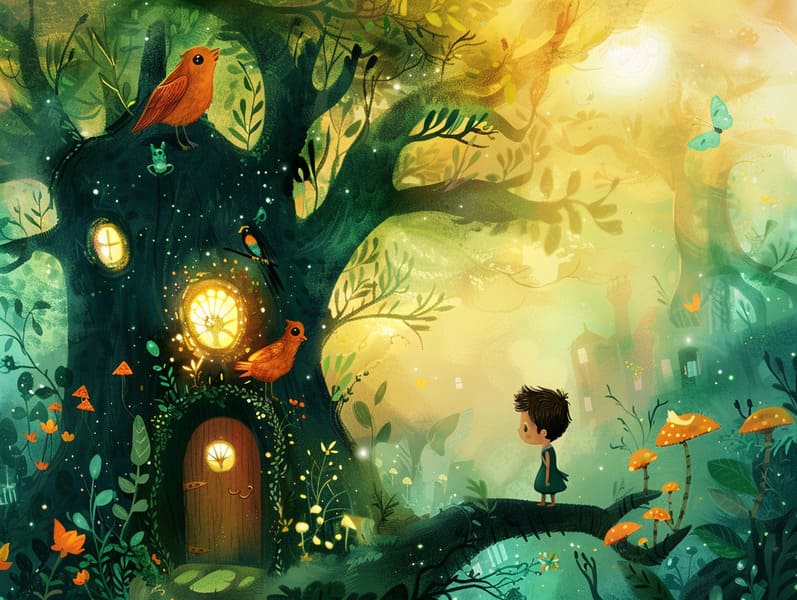The Evolution of Vintage Fairy Tales and Its Invariable Appeal.
The Evolution of Vintage Fairy Tales and Its Invariable Appeal.
Blog Article

Grimm's fairy tales have deep roots. These narratives have been transmitted from one generation to the next ages before they were ever put on paper. They were born from a variety of backgrounds, including African traditions. They were initially told among adults, often carrying themes and messages aligned with the societal norms and beliefs of the time.
The renowned Brothers Grimm, Jacob and Wilhelm Grimm, were among the first to collect many of these beloved fairy tales. Their volume, "Grimm's Children's Stories," included classics like "The Story of Cinderella," "Hansel and Gretel," and "Snow White," which have since become hallmarks in the world of famous fairy tales. Similarly, Hans Andersen's whimsical tales, such as "The Little Mermaid," and "The Story of the Ugly Duckling," have captivated hearts worldwide, establishing their place in the pantheon of treasured fairy tales.
Despite their historical roots, these stories remain as important as ever, especially as bedtime stories for kids. These magical stories are now available in various formats, including artistically illustrated books, fantastical animations, and online storybooks.
Their unwavering allure can be attributed to several captivating elements:
Ethical Lessons: Ancient fairy tales often offer important moral lessons. Tales like "The Tale of the Boy Who Cried Wolf" teach the benefit of truth, while "The Story of the Tortoise and the Hare" point out the values of resolve and modesty. These narratives offer little ones clear distinctions between right and wrong, building their moral compass in a mild yet deep way.
Compassion and Knowledge: Timeless fairy tales frequently present heroines facing struggles and tests, prompting readers to sympathize with their struggles and back their triumphs. For instance, "The Story of Beauty and the Beast" highlights the importance of looking beyond appearances to perceive the true being of a individual, cultivating kindness and understanding.
Cultural Recognition: Many ancient fairy tales are deeply ingrained in the cultural contexts from which they blossomed. Delving into these narratives can provide delightful insights into different ways of life, building a sense of cultural awareness and knowledge.
Inventiveness and Fantasy: The fanciful elements in fairy tales—mythical entities—enliven children’s innovations. These tales lead readers to supernatural realms, boosting creative thinking and a sense of delight that lasts a lifetime.
Timeless fairy tales are not only bewitching but also enlightening. They provide fascinating tools in strengthening various brain and heart skills in kids. When old fairy tales are spoken, they strengthen language proficiency by introducing new terms and meanings and complicated sentence structures. This practice also fosters auditory perception and attentiveness, as young readers keep up with the story, anxious to see what happens next.
Furthermore, examining the themes and characters of ancient fairy tales can strengthen evaluative skills and problem-solving abilities. Young ones are guided to identify patterns, foresee events, and grasp cause and effect. These conversations also aid kids say their thoughts and feelings, contributing to their emotional intelligence.
In today’s online age, the presence of online storybooks has made these fairy tales more obtainable than ever. Internet sites and apps supply wide arrays of popular fairy tales that can be viewed or listened on anytime, anywhere. Fairy tales narrated are particularly liked, providing an delightful method for kids to be a part of these fantastical tales. Spoken stories and read-to-me videos move characters and settings to life, often supplemented by bewitching harmonies and harmonies that intensify the tale-telling adventure.
The lasting appeal of ancient fairy tales lies in awesome site their ability to shift to the present while sustaining their key morals. Contemporary modernizations of these fairy tales often spotlight more representative protagonists and modern settings, making them accessible to today’s audience. However, the fundamental themes of spirit, empathy, and fair-mindedness remain unchanged, continuing to touch audiences of all ages.
Classic fairy tales also offer a sense of protection and recognition. They extend a ordered narrative with a straightforward beginning, middle, and end, often wrapping up with the culmination of conflicts and the triumph of righteousness over wickedness. This reliability can be placating for children, offering a sense of invariability in an constantly changing world.
Timeless fairy tales continue to charm and inform new generations, maintaining their radiance and relevance in modern society. As kids' bedtime tales, they put forth a perfect blend of enchantment and education, backing moral values, empathy, and creativity. The proliferation of web-based fairy tales and the sought after status of fairy tales voiced make sure that these timeless narratives remain attainable to new generations.
By perpetuating and broadcasting these narratives, we continue to extol the rich tapestry of creativity and cultural heritage. Whether you are delving into a richly illustrated book, experiencing a web collection, or listening via an audio story, the allure of bedtime fairy tales is always within reach. These narratives emphasize of the ageless essence of storytelling and its ability to draw us together across centuries and lands.
Be it you are browsing a vividly illustrated book, exploring a virtual collection, or listening on an audio story, the grandeur of timeless fairy tales is always within reach.
These tales illustrate of the lasting influence of narratives and its ability to draw us together across eras and regions, making a tie that charms and informs alike.